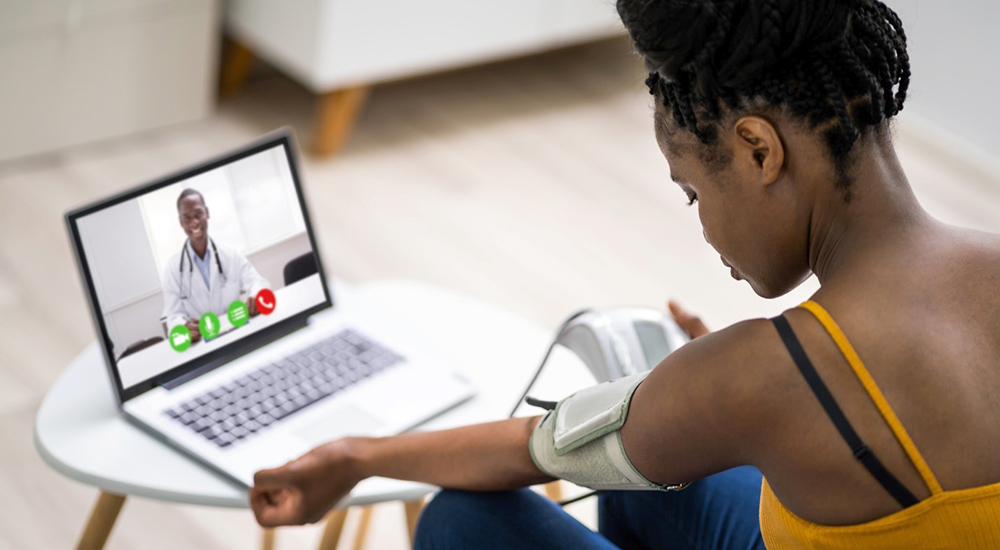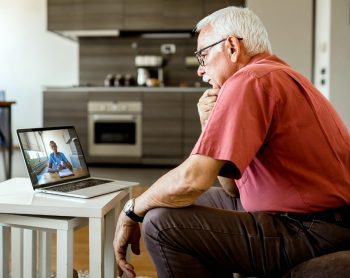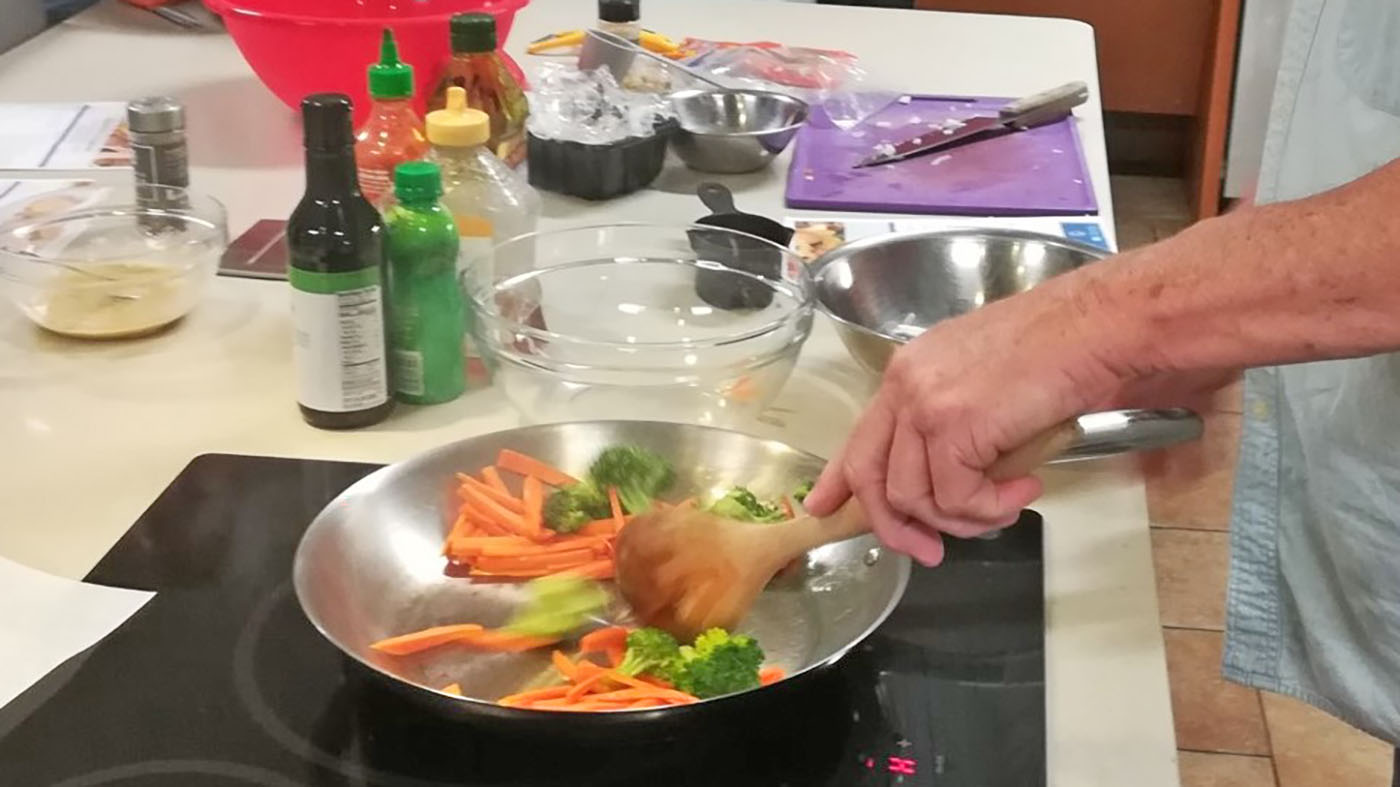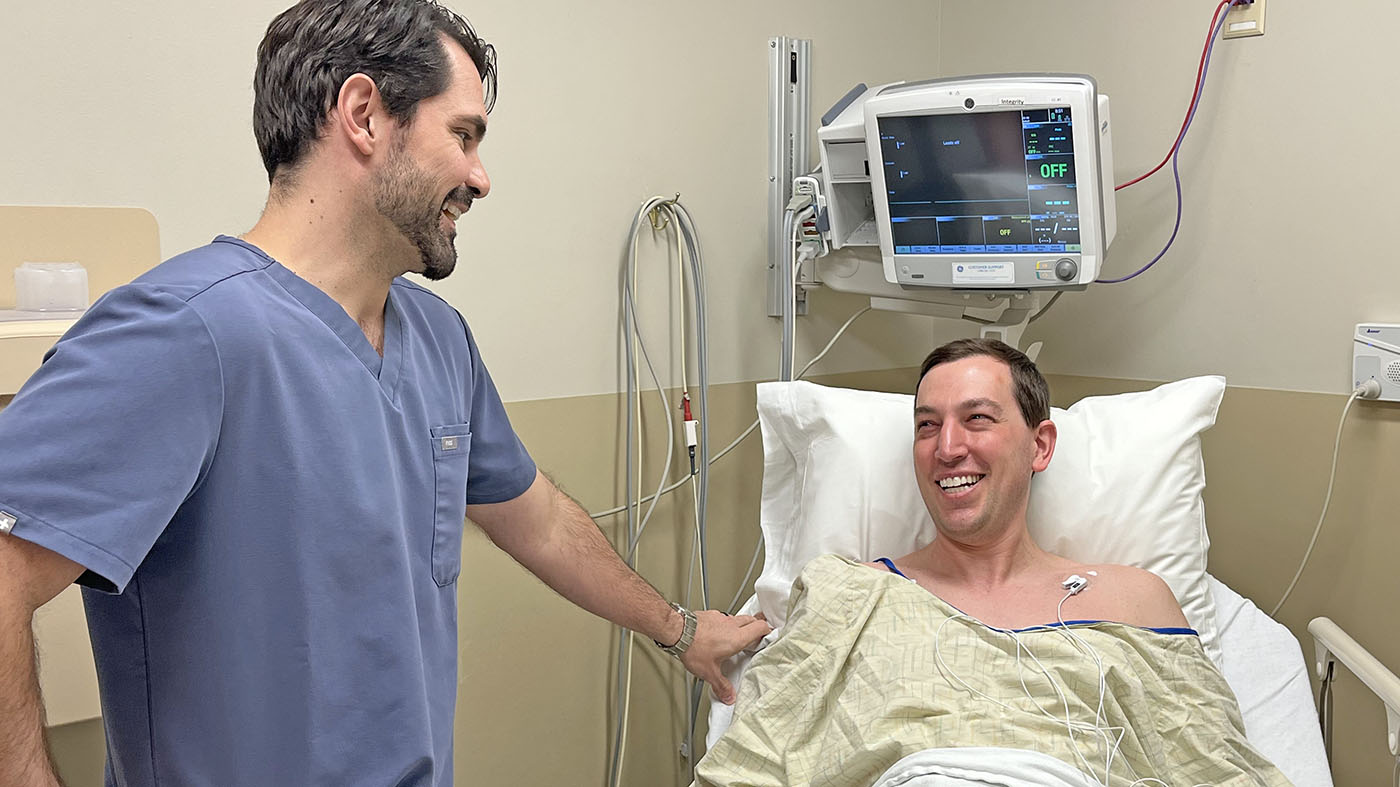VA is leading the way in telehealth innovation so Veterans can access care when and where they need it. Telehealth makes it easier for Veterans to connect with their VA care team from the home, clinic, hospital and other convenient locations.
When is telehealth right for a Veteran? Perhaps the Veteran lives far away from the closest VA Medical Center and would prefer to save on gas and the hassle of navigating traffic. Or they may feel safer or just more comfortable having their appointment from home.
Here are nine ways Veterans across the country are using telehealth as part of their VA care plan:
1. Primary care
Routine appointments with a primary care physician can often be conducted virtually. Video visits enable the VA provider to see the Veteran just as if they were in the exam room. And some Veterans can relay information such as heart rate and blood pressure from home monitoring devices.
With these telehealth technologies, Veterans can receive physicals and screenings – for conditions such as high blood pressure, obesity and depression – from any location with an internet connection.
2. Follow-up visits
While the first visit after sustaining an injury or infection might require a trip to the clinic, the follow-up appointments might not. Many VA providers can conduct virtual follow-up visits to assess progress or suggest changes to treatment – all while the Veteran stays home to rest and recover.
3. Management of chronic health conditions
VA providers can monitor and treat high blood pressure, heart disease and other chronic illnesses through telehealth, which gives them a more accurate picture of a Veteran’s health.
And this 89-year-old Veteran in Illinois who monitors his high blood pressure from home appreciates the extra time he can spend with his family.
4. Test results
VA providers and Veterans can discuss test results and subsequent recommendations through video visits rather than phone calls. Connecting face-to-face over video – even when miles apart – can help Veterans actively engage in their treatment plans and help providers know when Veterans need additional support.
Veterans can also use their Premium My HealtheVet Premium account to access test results through Blue Button and Secure Messaging.
5. Care for common illnesses and ailments
With telehealth, Veterans can get help with common issues such as allergies, colds and flu. They can also use video visits to show VA providers skin issues. Those issues include rashes and moles and receive their recommendations on the spot.
With any of these common issues, the provider may diagnose and prescribe a treatment right away. They may also recommend remote patient monitoring, which is also conducted conveniently through telehealth.
6. Mental health care
Using telehealth technologies, VA mental health providers can screen and treat Veterans for anxiety, depression, PTSD and more. By combining real-time, interactive video visits with therapists and free VA mental health apps, telehealth connects Veterans to the mental health resources they need.
7. Nutrition education
Food choices can affect health conditions like diabetes and high blood pressure. By connecting with nutritionists through videoconferencing, Veterans and their families can receive personalized nutrition education and counseling and make changes to improve their health.
8. General rehabilitation
Physical and occupational therapists can treat Veterans using telehealth technology and VA Video Connect. These tools let them stay safely at home. Please read about how a retired colonel with numerous injuries and chronic pain was so impressed with the telephysical therapy that he wrote a glowing letter to his medical center’s director.
9. Group visits
VA Video Connect and other telehealth technologies enable groups of people to receive care together. Group video visits are typical in mental health care, nutrition education, rehabilitation and general health education. Some Veterans, especially those living in remote areas, turn to these group sessions to reduce social isolation.
And VA chaplains often hold video visits to connect sick Veterans with family members living in different locations.
Ask your provider if telehealth is a good fit
Remember, Veterans should always consult their VA provider to see if telehealth is a good fit for their health care needs. Some telehealth programs may not be available in all locations.
To learn about telehealth options in your area, visit telehealth.va.gov and reach out to your health care team at your local VA Medical Center.
Treva Lutes is a communications specialist with the VA Office of Connected Care.
Topics in this story
More Stories
VA promotes early nutrition intervention for chronic kidney disease with targeted programs like Heathier Kidneys Through Your Kitchen.
VA Research Advisory Committee on Gulf War Veterans’ Illnesses hosting Veteran Engagement Sessions in Phoenix for 1990-91 Gulf War Veterans.
Navy Veteran and president of the American Medical Association got a colonoscopy and encourages other Veterans to do the same.








As much as I would like to worry about security I worry more about my health first. I have been using telehealth for over 1 year and the people help me get my medications and set up appointments with VA. Submitting my vitals by video connect
allows for easy way to get this done, no other medical information is given and feel safe doing this.
I’m a primary care physician and personally cannot imagine neglecting the face-to-face component of my encounter. From a physician and patient perspective, I may just prefer this in-person. I can also confirm that it’s easier and more lucrative to do Telehealth. I could be making a lot more money and saving myself a lot of work by doing Telehealth, but it’s not condusive to an effective encounter (in my opinion).
NOT a fan of telehealth. I feel my HIPAA rights are endangered due to the possibility of the appointments being hacked, after all the appointments are over a computer. Also, more importantly, it means I’m not good enough or worth bothering with in person. Telehealth is just the va telling vets we don’t care about you as long as we get paid our big paychecks. Doctors can not adequately examine and asses any veteran’s condition over a monitor. Say a vet is suicidal and is holding a gun to his/her head, just exactly how is the provider supposed to prevent the vet from pulling the trigger over a computer connection? How is the provider going to get the gun away from the vet?
Not a fan of telehealth. If I can’t be seen IN PERSON then I must not be worth bothering with.
I second SW’s concerns regarding the security of our medical data.
Do understand, SW, that teleconferencing through the VA’s software is encrypted. The security concerns manifest themselves primarily through human complacency. Many times security is compromised when staff runs insecure software on their work machines (e.g. social media apps, browsers), allowing holes that can be exploited by malicious software.
If you teleconference through traditional phone lines or cell calls, however, then your concerns about security are correct. Even encrypted services such as zoom are undesirable, as they have no incentive to disclose security holes to the general public.
So, what is the VA doing to safeguard our private data? Medical centers are being hit by ransomware all across the country and the feds (in three different administrations now) are doing squat. What gives?
I am using TeleHealth for Mental Health care. It saves me 45 minutes each way for every appointment. Also, since I am 75 & no longer drive in high speed traffic, it saves my wife from having to go with me to every appointment. I never filed for travel reimbursement but I guess I could have so that would be saving the VA money too.